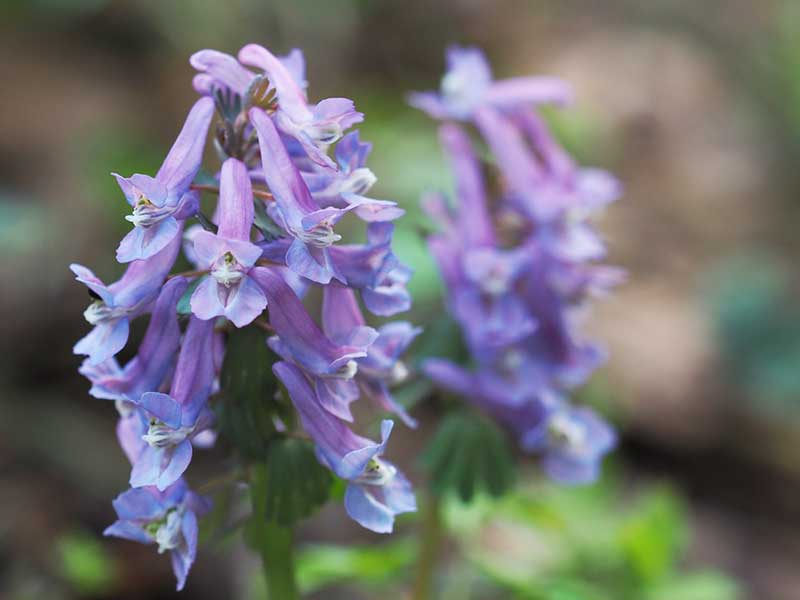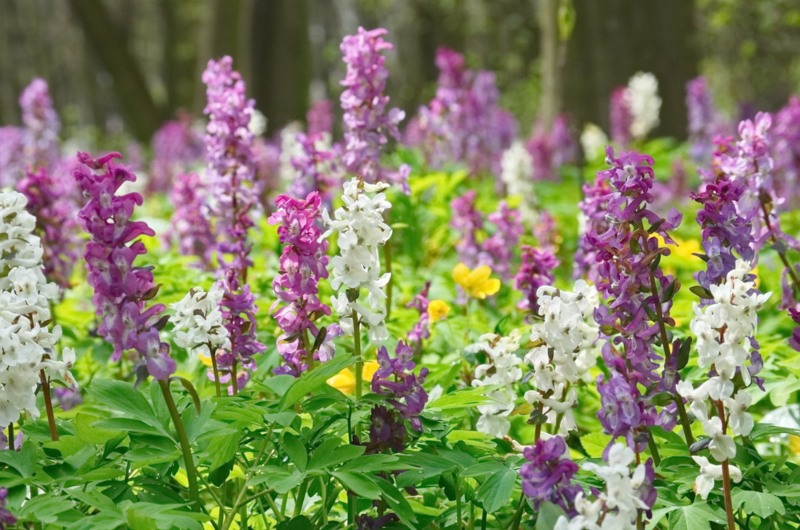The corydalis plant has small flowers that are unusual and delicate. They are a trumpet shape, and they come in many different colors, including yellow, white, blue, purple and pink. They grow in zones 5 through 7. The flowers bloom in the springtime, and the plant stays blooming for months. This perennial is a popular plant that has picked up many nicknames over the years, including turkey corn. They can grow to be anywhere from 12″ to 18″ tall.
Light and Temperature Requirements
The corydalis loves shade, making this a great plant to add some color to a shady area. They can have some sun, but generally, the afternoon sun would be too hot for them. This is especially true during the summers in zone 7. If you’re growing them from seed, they need to be kept at about 65 to 75 degrees for a month to allow them to germinate.
Watering
The corydalis needs a lot of water, but they can’t be allowed to sit in water for long periods of time. They can be watered once or twice a week, especially when it gets hot. However, if the soil around this plant is still damp, don’t water it again until it has dried out. Too much water around the plants can cause the roots to rot. If you have seedlings, water them often to keep them damp. Be careful in the winter not to let the soil stay moist, as the roots will freeze.
Soil and Fertilizing
The soil of the corydalis should be well-draining. The soil should have plenty of organic material and be rich in nutrients. Loamy soil that is well-drained is often its preference. If it’s given soil that doesn’t drain well, it will not thrive. If the soil where you want to plant it is rich but doesn’t drain well, mix up some sand and/or small rocks to the soil when you prepare it for the plant. The corydalis plant generally doesn’t need to be fertilized, but it’s ok to use a gentler fertilizer on it at the start of the growing season. This can give it a boost as it goes through its growth cycle. The pH of the soil should be between 5 and 7.

Deadheading and Pruning
The corydalis doesn’t need pruning with the exception of deadheading if desired. The plant self-sows and does so rapidly, so if left alone they will spread. If you don’t want it to take over more of your landscaping, you can deadhead the wilted blooms to prevent them from seeding the soil. Deadheading will also improve the health of the plant and allows it to bloom for a longer period of time.
Plant Problems
While this plant is known for a few health benefits, it is a toxic plant that should be treated carefully. Its toxicity can cause gardeners to develop acute hepatitis as well as causing vertigo, dizziness, and nausea. If you want to try this plant for its medicinal properties, consult your doctor.




